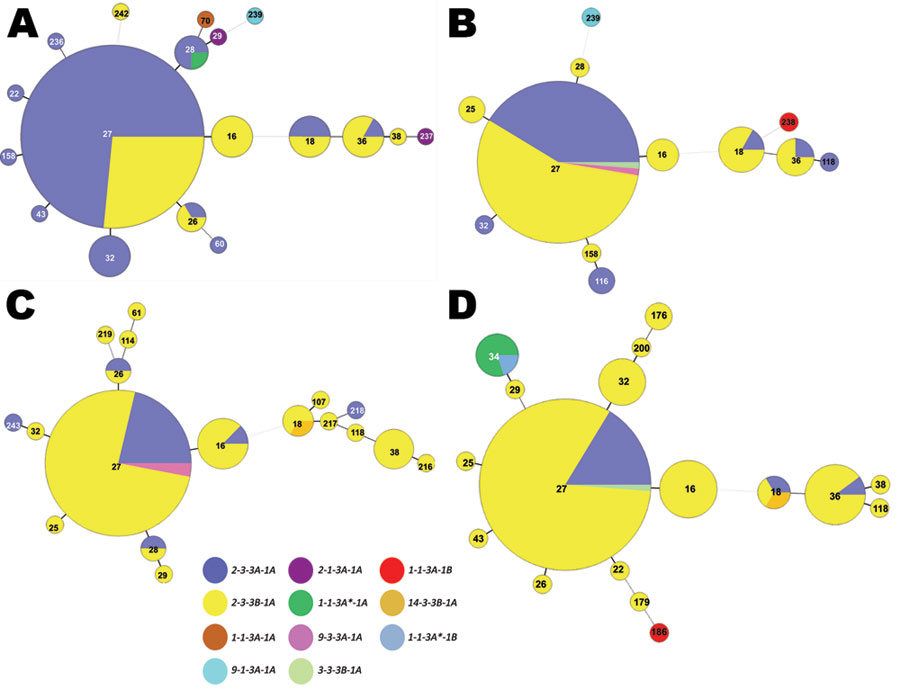Volume 18, Number 8—August 2012
Research
Population Diversity among Bordetella pertussis Isolates, United States, 1935–2009
Figure 3

Figure 3. . . Minimum spanning trees depicting changes within the Bordetella pertussis population, United States, 1997–2009. Multilocus variable number tandem repeat analysis (MLVA) types are represented by circles and are scaled to member count within each panel; multilocus sequence typing (MLST) types are represented by color. A) Period 5, 1997–1999, n = 159, the early years of acellular pertussis vaccine (aP) use. B) Period 6, 2000–2002, n = 98. With aP in use, MLVA 27 with the fim3B allele dominated. C) Period 7, 2003–2005, n = 98. In 2004, during the late aP use period, the novel pertactin allele (prn14) was identified in an isolate from New York. D) Period 8, 2006–2009, n = 125. After the introduction of the aP booster for adolescents and adults, MLST type prn1-ptxP1-ptxS1B-fim3A (previously found in periods 2–4 and 6) reappeared with a new MLVA type.